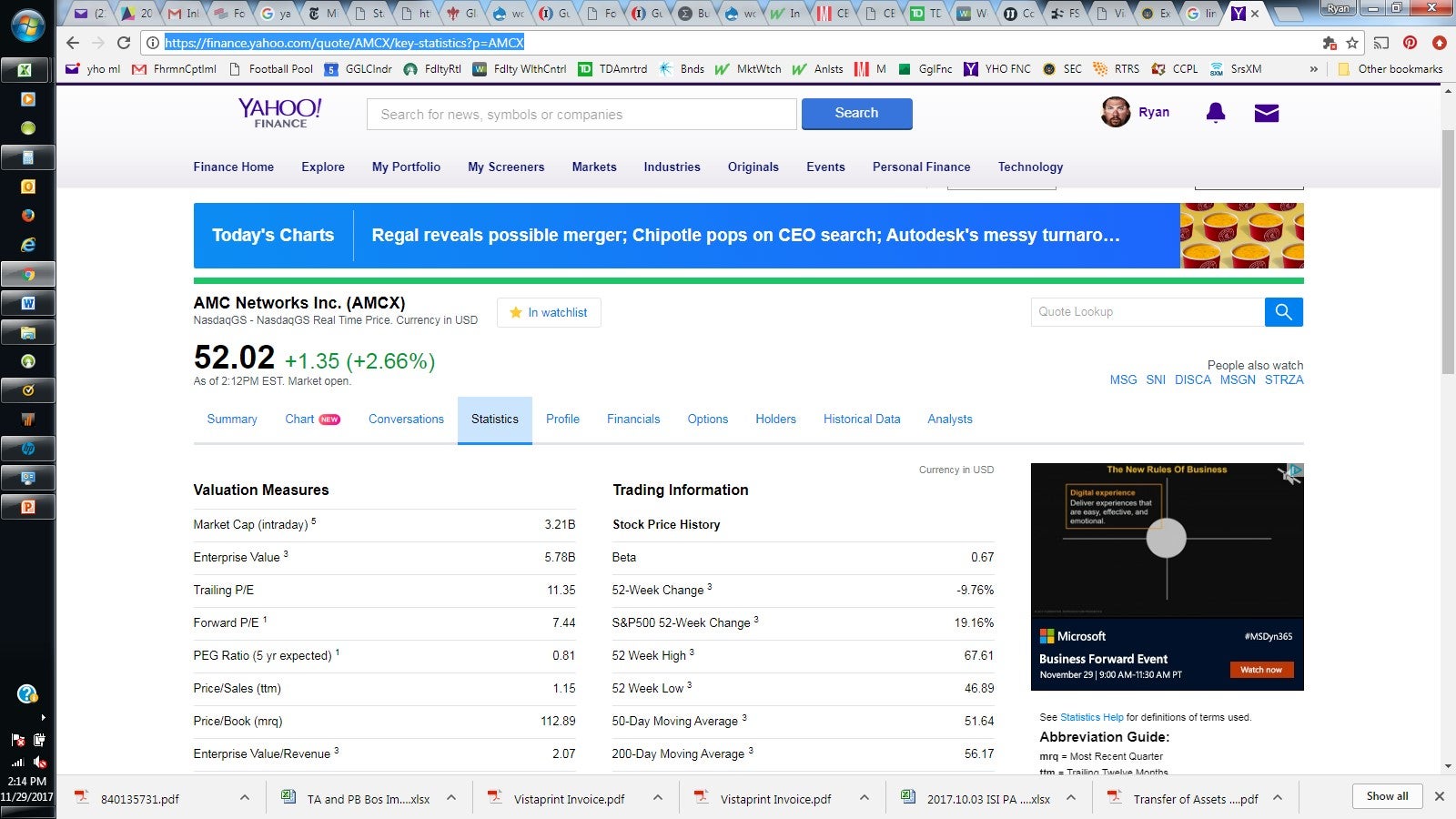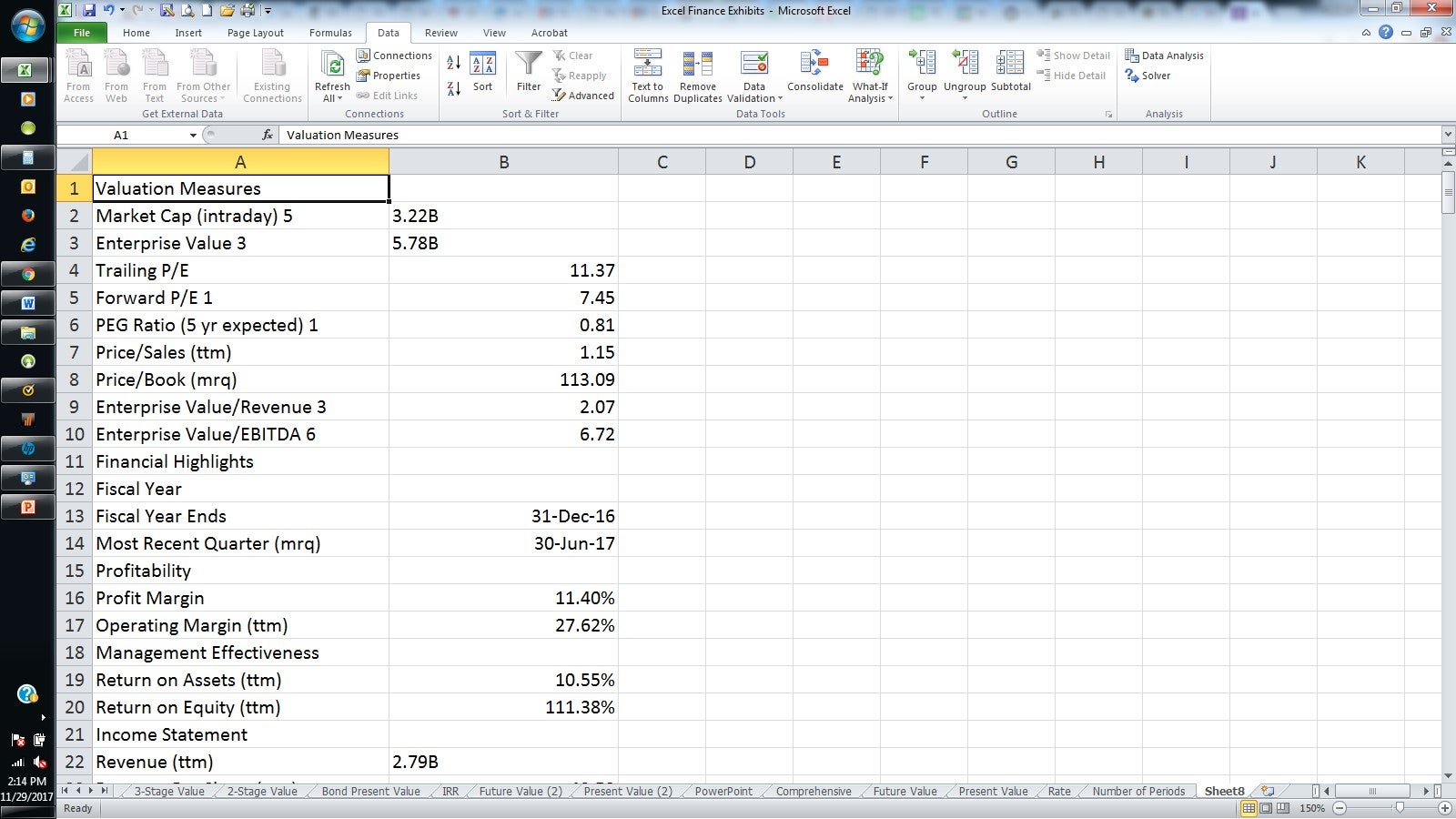There are a number of ways to link external stock market and financial data into Excel. The point of downloading data is to be able to customize and manipulate it to create your own formulas, which can be refreshed throughout the day as stocks change in value, or as often as you would like to refresh the steady stream of market information coming in. This can save a step where data entry is no longer needed, freeing up time to manipulate and interpret financial information. (Related: Stocks Basics: How to Read A Stock Table/Quote)
Yahoo! Finance offers the capability to download basic stock price information into Excel. For users who have created their own portfolios, in Yahoo! Finance there is a link or "Download" function to save the information into an Excel workbook. Data that can currently be downloaded includes current stock prices, the daily high and low prices and daily trading volume.
Additionally, it is possible to download just about any data from the Internet into Excel. In Excel under the "Data" menu, choose to download data from the web or "From Web," which is the specific menu item in Excel. A separate pop-up will open and allow the input of literally any website. Returning to Yahoo! Finance and the "Statistics" portion for AMC Networks.

Below is the specific table that Excel created:

Users may also want to manually calculate ratios to have a more customized experience. For instance, the specific ratio the user needs may not be calculated by Yahoo! Finance, or the user might want to use different time periods in the calculations. For instance, using the trailing twelve month data versus the last full fiscal year of information can help provide more current ratios to analyze. Below are other examples of specific ratios and how to calculate them.
Once basic company financial information has been downloaded, custom ratios and analyses can be performed. Below is a sample spreadsheet where company information has been downloaded from www.sec.gov, the Securities and Exchange commission site that contains originally company filings.
Formulas below include the price to earnings ratio, or the stock price divided by earnings. Earnings yield is simply the inverse of the P/E ratio and, when compared to bond and Treasury yields, provides an indication of whether a stock might be over or undervalued.
Price to free cash flow (P/FCF) per share looks at a firm’s cash flows, which can be used in a discounted cash flow (DCF) analysis to value a stock. We will discuss DCF in further detail below. FCF Yield is again the inverse of P/FCF. Return on assets (ROA) is net income divided by a firm’s total assets. Return on equity (ROE) uses shareholders’ equity in the denominator, and return on capital (ROC) uses a firm’s total capital (shareholders’ equity plus long-term debt) in the denominator. These are measures of how effectively management is utilizing company capital to generate returns for shareholders.

Guide To Excel For Finance: PV And FV Functions
-
 Investing
InvestingGuide To Excel For Finance
Formulas, functions and features you need to know when using Excel for financial analysis. -
 Insights
InsightsBuyers Want Yahoo Japan, Not Yahoo
Buyers may be more interested in Yahoo’s Japanese counterpart than the company itself. -
 Investing
InvestingHow Yahoo Makes Money
Most of Yahoo’s current business model might sound redundant, but it still remains one of the most popular web sites in the world. Here's how it generates revenue. -
 Investing
InvestingThe Thrilla in Manila: Yahoo Finance Versus Market Watch (WMT)
An unbiased comparison of the two major financial tools. -
 Investing
Investing4 Companies Owned by Altaba, the Former Yahoo
Yahoo was sold to Verizon and rebranded as Altaba. It's main web portal is now Oath, which houses several digital assets, including some of Yahoo's own. -
 Investing
InvestingYahoo's Stock: Only 8% Return in 10 Years (YHOO)
Now that Yahoo's core business is being sold to Verizon, a look back at the drivers of its stock price history over the last ten years. -
 Investing
InvestingYahoo: New Data Breach Involved Forged Cookies
Yahoo disclosed another potential hack, this time in 2015 and 2016 thanks to forged cookies.



